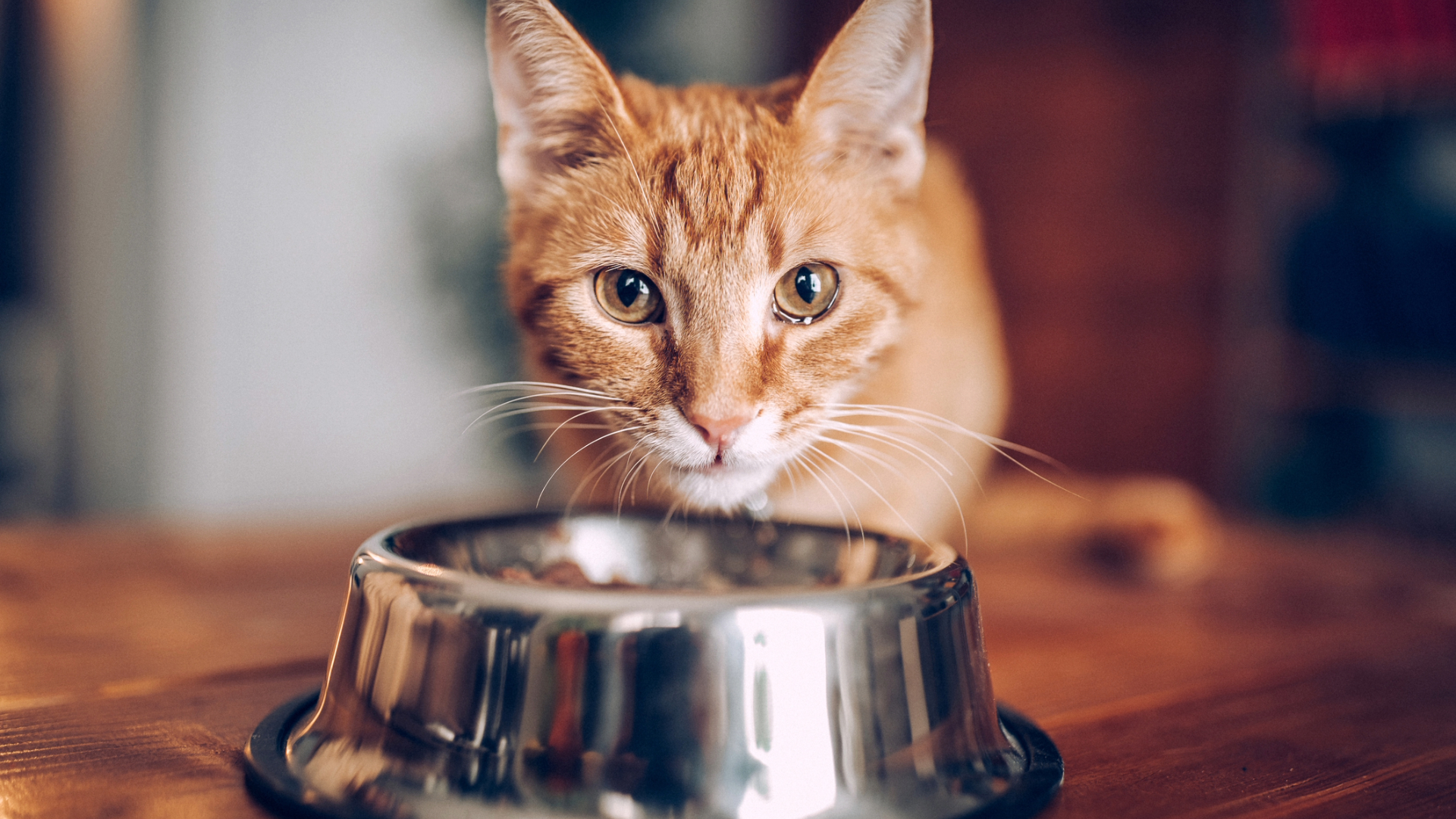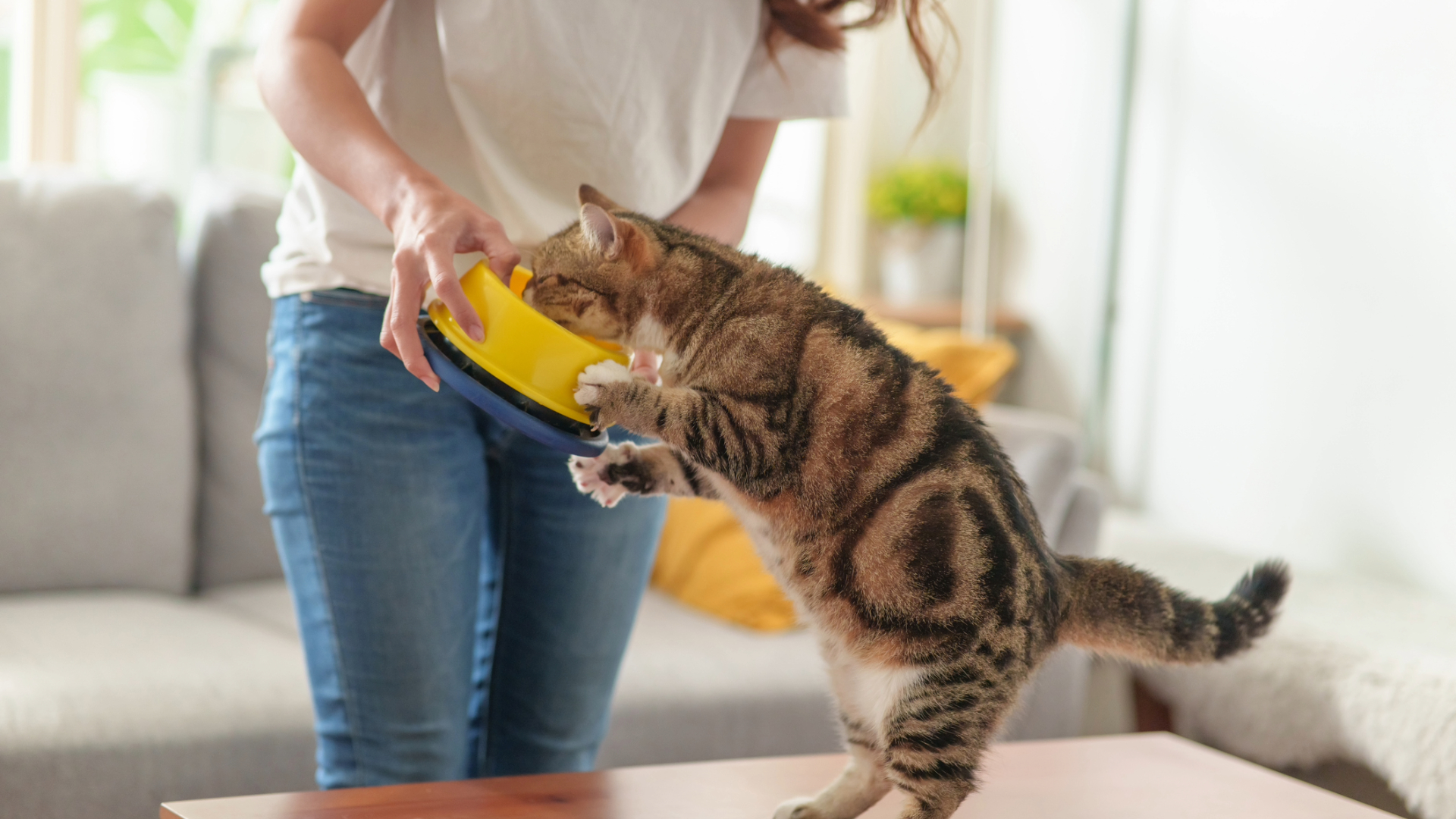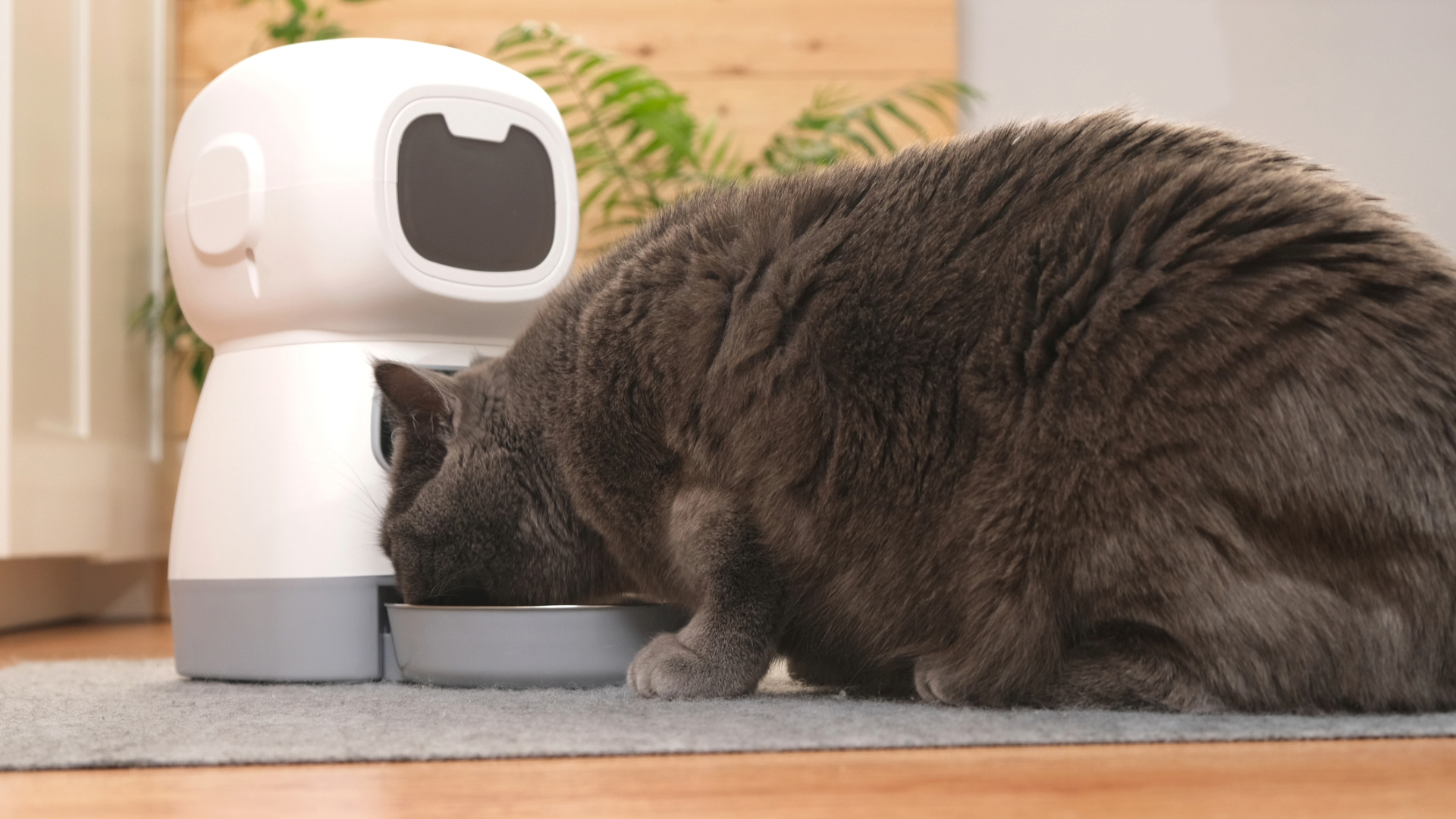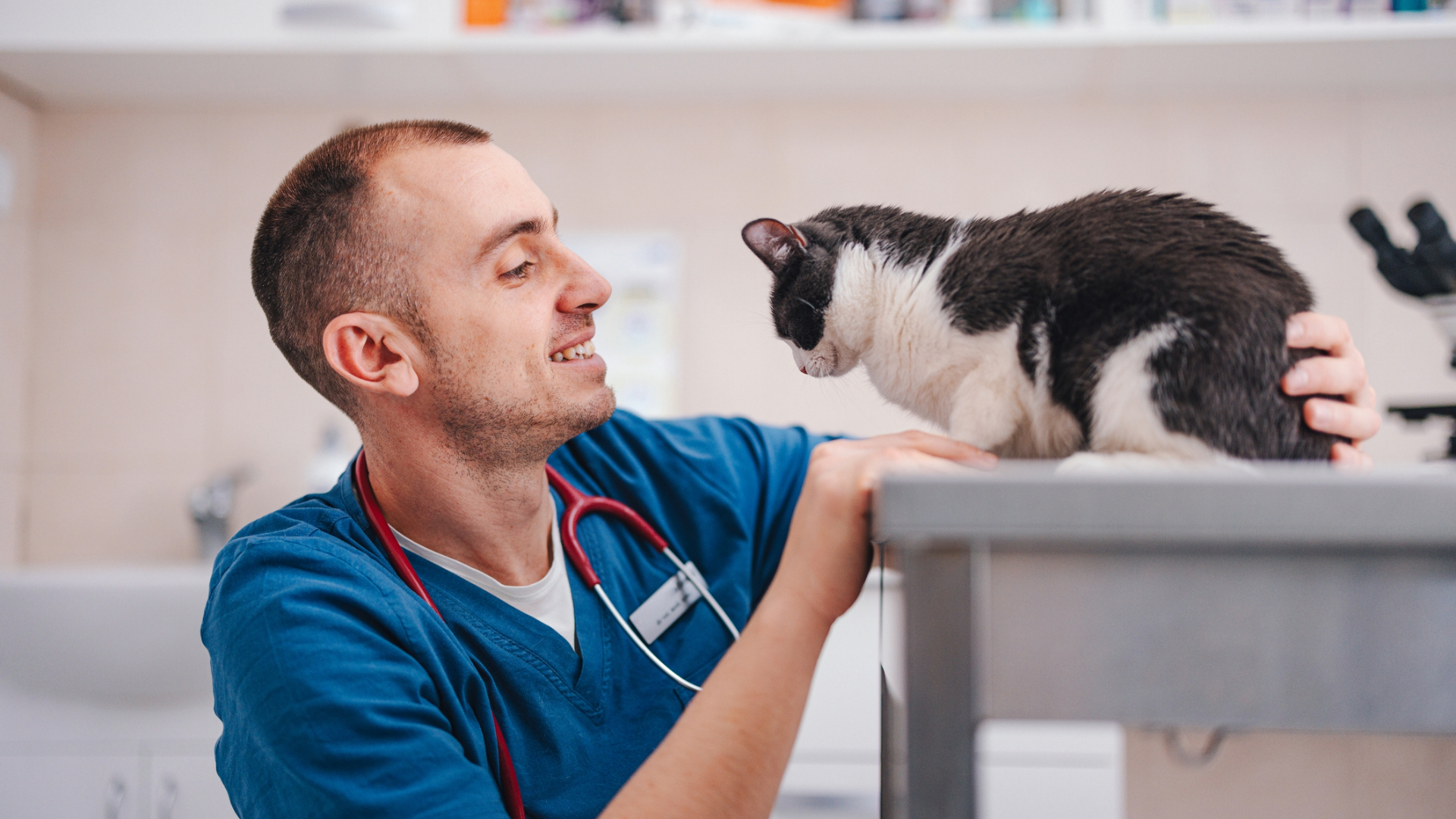
Free feeding cats is a popular method of providing food for our feline friends, but is it the best option? As a vet with over 13 years of experience working with cats and their owners, I frequently get asked about the pros and cons of different feeding methods.
In this article, I’ll explore the benefits and drawbacks of both scheduled feeding and free feeding, offering guidance on which method might better suit your cat’s needs.
I will also share tips for transitioning from one approach to the other and reveal what most vets recommend. If you’re curious about the top food options for your cat, check out our comprehensive guide on the best dry cat food. Now without further ado, let’s dive into the debate: scheduled vs free feeding.
What is free feeding a cat?
Free feeding involves leaving food out for your cat at all times, allowing them to eat whenever they want. This method typically uses dry kibble, which stays fresh longer and doesn’t spoil as quickly as wet food.
Pros of free feeding cats
- Convenience: Owners don’t have to worry about maintaining a feeding schedule.
- Self-regulation: Some cats are natural grazers and can regulate their food intake.
- Availability: Food is always accessible, making it a good option for multi-cat households with minimal resource competition.
Cons of free feeding cats
- Overeating and obesity: Cats may eat more than they need, leading to weight gain.
- Spoiled food: While dry kibble stays fresh longer than wet food, it can still become stale or contaminated if left out for extended periods. If this is a concern, be sure to read our guide on how to keep cat food fresh.
- Lack of portion control: It can be challenging to monitor exactly how much your cat eats.
- Feeding dominance: In multi-cat households, dominant cats may monopolize the food or bully other cats away from it.
Free feeding works well for some cats – particularly those who maintain a healthy weight and don’t overeat – but it’s not without its challenges.

What is scheduled feeding?
Scheduled feeding involves providing meals at specific times during the day. Owners can achieve this manually by serving portions throughout the day at regular intervals.
Owners can also use an best automatic pet feeder for convenience if they aren’t going to be around at feeding times.
Pros of scheduled feeding cats
- Portion control: You can monitor and manage your cat’s food intake, reducing the risk of overeating and obesity.
- Routine establishment: Cats thrive on routine, and scheduled feeding can help create a predictable daily pattern.
- Medical monitoring: Changes in appetite are easier to spot, which can help detect health issues early.
- Reduces food waste: Scheduled feeding minimizes the risk of food going stale or being left uneaten.
Cons of scheduled feeding cats
- Time commitment: Owners need to adhere to a consistent feeding schedule.
- Hunger management: Cats accustomed to free feeding may initially struggle to wait for their meals.
- Requires adaptation: Transitioning from free feeding to scheduled feeding takes time and patience.
Scheduled feeding is especially beneficial for cats prone to overeating or those with medical conditions requiring controlled diets.

How to switch cats from free feeding to scheduled feeding
Switching from free feeding to scheduled feeding requires patience and a gradual approach to avoid stressing your cat. Follow these steps:
1. Choose fixed meal times
Decide on two to three meal times per day, spaced evenly.
2. Determine the daily food amount
Calculate the total daily food your cat needs based on their weight and activity level, then divide it into meals by splitting the daily food into the number of meals you want to feed.
3. Gradual reduction
Start by removing the free-feeding bowl for short periods, gradually increasing the time it’s unavailable.
4. Be consistent
Stick to your new routine and remove any remaining food after a set timeframe, even if the cat hasn't finished eating.
5. Introduce meal portions
Serve small meals at the chosen times while gradually decreasing the amount left out for free feeding.
6. Use an automatic feeder
Automating mealtimes ensures consistency, even when you’re away.
7. Positive reinforcement
Pair mealtimes with positive cues, such as specific sounds or phrases, to help your cat associate them with food.
8. Provide distractions
Use toys or playtime to keep your cat occupied between meals.
9. Monitor progress
Observe your cat’s behavior and adjust portions or timing as needed.
10. Consider your cat's age
Older or younger cats may benefit from smaller, more frequent meals and may not be able to last as long between meals.
Patience is key during this transition. Gradually adapting to a scheduled feeding routine ensures your cat’s comfort and reduces stress.
Scheduled feeding vs free feeding cats: What do vets recommend?
Most vets recommend scheduled feeding over free feeding for several reasons:
- Weight management: Scheduled feeding allows precise portion control, reducing the risk of obesity—a common issue in cats.
- Routine benefits: Cats are creatures of habit and feel more secure with a consistent daily routine.
- Easier medical care: Tracking your cat’s appetite becomes simpler, helping you detect changes that might indicate health problems.
- Behavioral improvements: Scheduled feeding can reduce food-related dominance issues in multi-cat households.

While free feeding can work for some cats, particularly those with high energy levels or specific medical conditions, it often leads to overeating and related health problems. Scheduled feeding provides more control and fosters healthier eating habits, aligning with the lifestyle of most domestic cats.
When it comes to deciding between free feeding and scheduled feeding, consider your cat’s unique needs and personality. While free feeding offers convenience, scheduled feeding provides greater control over your cat’s diet, supports weight management, and promotes a healthy routine. If you’re ready to make the switch, follow the steps outlined above for a smooth transition. A well-thought-out feeding routine is one of the best ways to ensure your cat’s happiness and well-being.
If you're wondering, 'Is my cat overweight?' and 'How much should I feed my cat?' Our vet guides are here to help!







